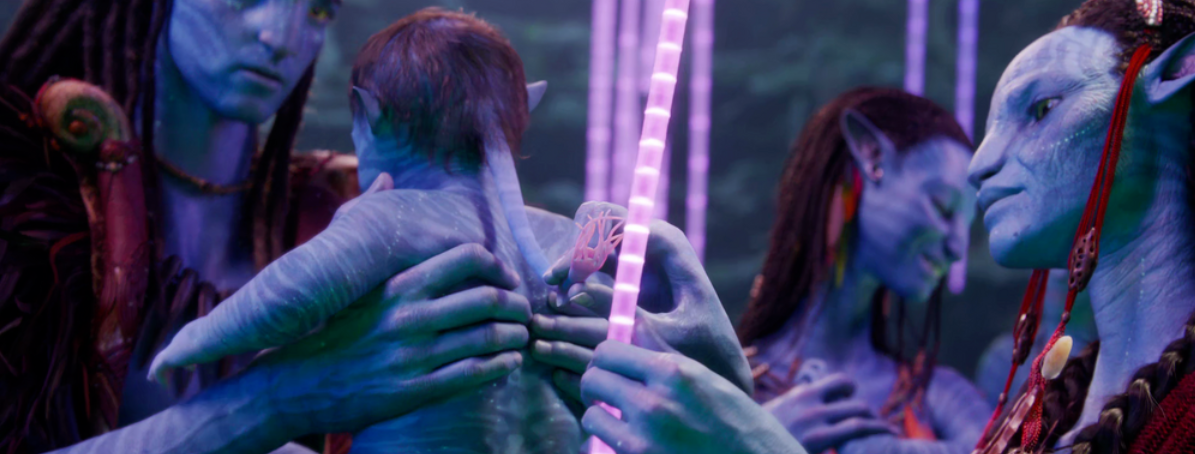 At first glance, a human might think of the Na’vi queue as simply a long, rather ostentatious hair braid. This seemingly conventional braid actually sheathes a ‘neural whip’ that is an extension of the Na’vi’s nervous system. At its distal end is a remarkably intricate branching of neural tendrils that can be connected to similar structures of other life forms, both animal and plant.
At first glance, a human might think of the Na’vi queue as simply a long, rather ostentatious hair braid. This seemingly conventional braid actually sheathes a ‘neural whip’ that is an extension of the Na’vi’s nervous system. At its distal end is a remarkably intricate branching of neural tendrils that can be connected to similar structures of other life forms, both animal and plant.
This connection, called tsaheylu, allows a Na’vi to exchange sensory information—energetic and kinetic signals—with other creatures, members of the zooplantae phylum (the animal-like plants which are unique to Pandora), and even the moon itself. The queue allows the Na’vi to access the neural network that envelops the entire moon, and thus the collective wisdom of all Pandoran life. For the Na’vi, this is communion with their deity, Eywa. From birth on, the Na’vi individual’s hair is painstakingly braided over the antenna-like neural whip, protecting it from harm. The Na’vi word for ‘queue’ is tswin or kuru.

 It is difficult to overstate the importance of the kuru to the spiritual and physical well-being of the Na’vi. As well as communicating directly with Eywa, the Na’vi are able to commune with and seek guidance from their ancestors, via tsaheylu with the so called Utral Aymokriyä (Trees of Voices), Vitrautral (the Tree of Souls), and the underwater equivalent, Ranteng Utralti. A Na’vi’s first instance of tsaheylu is with their mother as a baby, followed by a communion at Utraya Mokri or Ranteng Utralti.
It is difficult to overstate the importance of the kuru to the spiritual and physical well-being of the Na’vi. As well as communicating directly with Eywa, the Na’vi are able to commune with and seek guidance from their ancestors, via tsaheylu with the so called Utral Aymokriyä (Trees of Voices), Vitrautral (the Tree of Souls), and the underwater equivalent, Ranteng Utralti. A Na’vi’s first instance of tsaheylu is with their mother as a baby, followed by a communion at Utraya Mokri or Ranteng Utralti.
Tsaheylu is used on a daily basis to connect to animals for purposes of exerting control over them, a form of ‘mental reining’. This is vital to the success and protection of the clan; the pa’li (direhorse; left) and the ikran (mountain banshee; below) both come under the sway of the Na’vi through use of the kuru, as does the ilu for ocean clans.
In rare instances, other dangerous animals such as toruk (great leonopteryx) and palulukan (thanator) can be controlled through this neural interface as well.
Na’vi are also known to domesticate the calm and trainable pig-like fwampop (tapirus), and the bat-like riti (stingbat), despite its long, potentially lethal tail spike. They train riti to come when called and perch on their shoulders or eat fruit from their hands.
Oxygen may also be transferred through the kuru. Some creatures help the Na’vi freedive by providing oxygen through the kuru while bonded. The ilu and the Ranteng Utralti do this, as well as an invertebrate known as the txampaysye, ‘sea breath’, which works as a kind of external gill once connected via the kuru.
